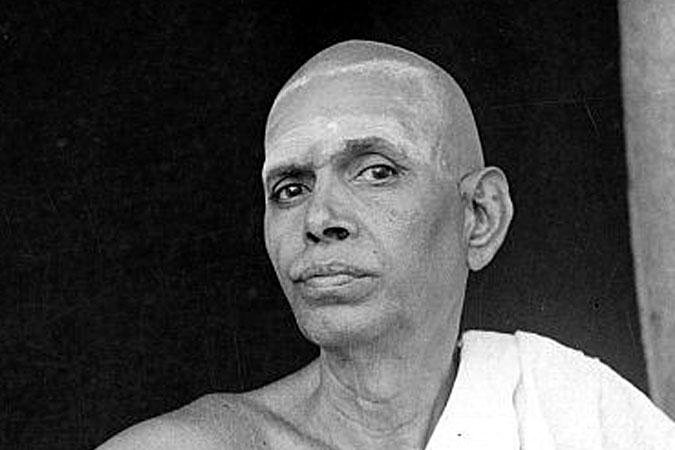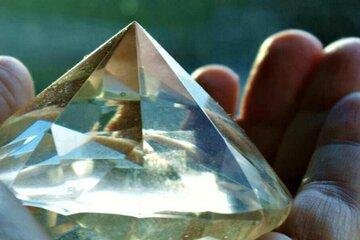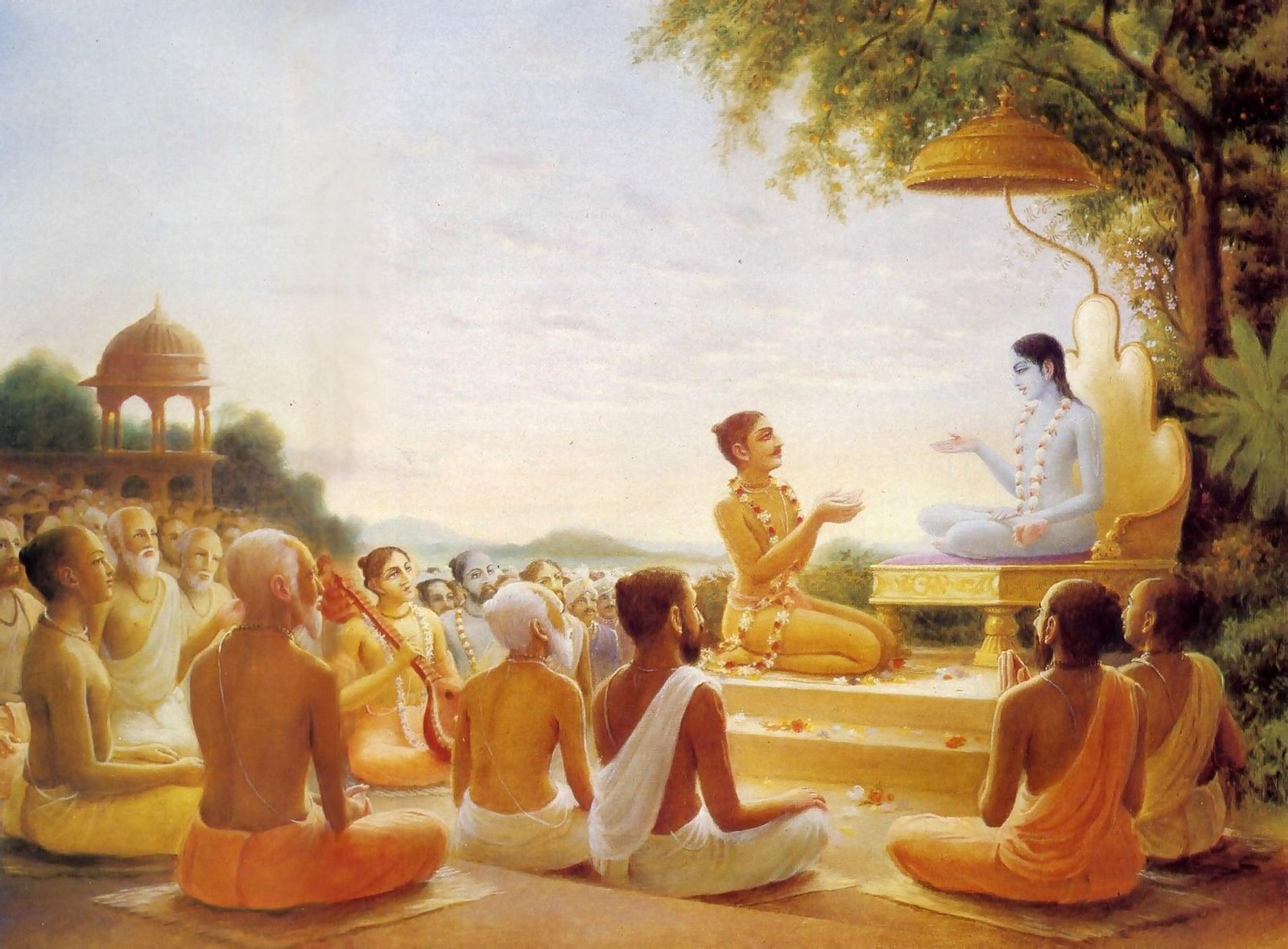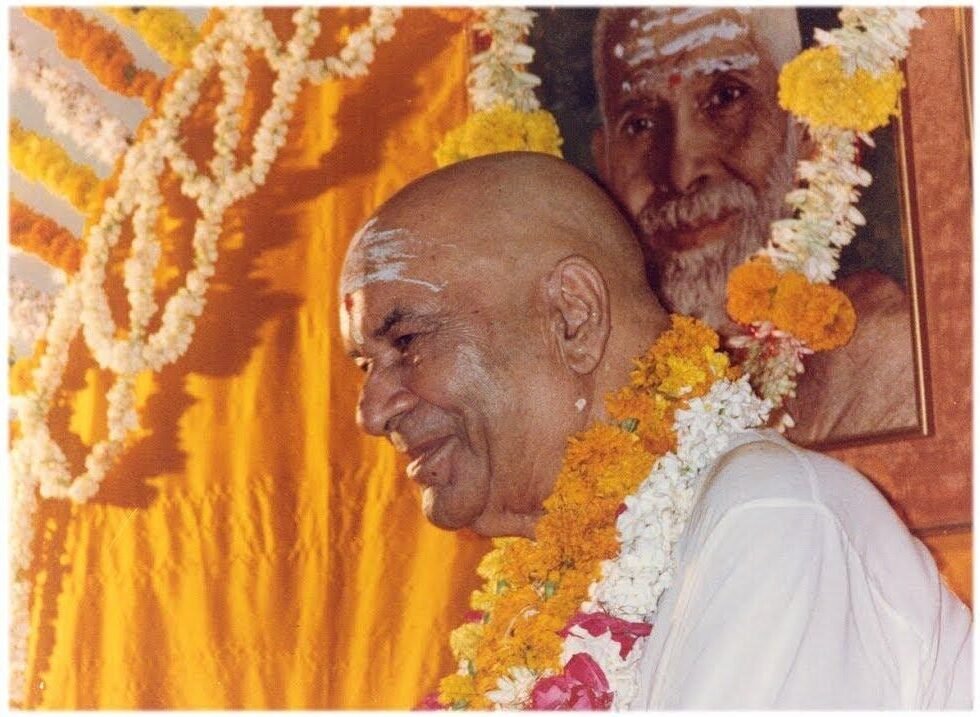Blog
Spirituelle Weisheiten
aus dem Herzen von Satsang

Browse by Topic through the Archive
Um ein bestimmtest Thema zu finden kannst du die Suchfunktion benutzen
Neuester Blog
Essential Extracts from the Manuscript

Aham Sphurana
Ein Einblick in die Selbstverwirklichung
Neues Buch über Sri Ramana Maharshi

Weltweit verfügbar
Auf www.openskypress.com und Amazon:

“Meiner Meinung nach wird Aham Sphurana, ein Einblick in die Selbstverwirklichung, eine Schatztruhe der Weisheit für die Wahrheitssuchenden im Allgemeinen und für die Anhänger Bhagavans im Besonderen sein.”
Swami Hamsananda – Athithi Ashram, Tiruvannamalai
Essential Extracts from the Manuscript
Position 2652
F: Bleibt also dieser Bewusstseinszustand beständig nur bei sich selbst, ungestört von Gedanken, der Sahajastithi genannt wird?
B: Nein. Es heißt Aham Sphurana.
F: Was ist dann das Sahajastithi?
B: Keine Beschreibung möglich. Das reflektierte Wesen – Bewusstsein, das in einem physischen Körper lokalisiert ist — zerstört wird; danach ist zerstört, bleibt nur das, was immer war. Es ist die absolute Realität. Es transzendiert Dualitäten wie Sein und Nichtsein, Wissen und Unwissenheit, Licht und Dunkelheit usw. Es ist DAS – WAS – IST, das ist alles, was darüber gesagt werden kann. Das ist es, was YAHWAH steht für in der Bibel. Obwohl Er darin ein persönlicher Gott zu sein scheint, der das Schicksal der Kinder Israels leitete, kannten die talmudischen Propheten der Antike den transzendentalen Aspekt, ebenso wie der Christus. Gott sagte zu Moses: „Ich bin Abraham, Isaak und Jakob als der allmächtige Gott erschienen, aber unter meinem Namen, YahwAh, war ich ihnen nicht bekannt.“ Andererseits kommt der Begriff Yehwah viele Male in der Genesis vor. Gibt es einen Widerspruch? No. Propheten vor der Zeit Moses kannten den persönlichen Gott Jehwah, aber Moses war der erste, dem der transzendentale, formlose Aspekt offenbart wurde. Die früheren Propheten kannten den Namen, aber nicht seine Bedeutung. Sie liebten Gott und schätzten seinen Namen, verstanden aber die Bedeutung oder Bedeutung des Namens nicht.
Der Name bedeutet „Ich bin, der ich bin“. Gott offenbarte Mose die Bedeutung des Namens, während den früheren Propheten nur der Name gegeben worden war. Der Name bedeutet, dass jemand, der einfach subjektiv bewusst ist, ohne ein Objekt zu kennen, in Gott absorbiert oder umgewandelt wird. Dies ist keine intellektuelle Überzeugung bzw mentale Behauptung. Es ist das Erblühen des Herzens – Lotus[Hridayapundarikam] der Liebe von innen.
Position 2693
Q: Bhagavan mentioned something known as the ”Aham Sphurana” yesterday. Having reached this Aham Sphurana, how does one proceed from there to Self-Realisation of the final Sahajastithi?
B: Having reached Aham Sphurana, no further effort is possible. For one who has reached the Sphurana, this question is impossible — as is any other question. No doubts arise because the doubter has long ago given himself up to the infinite Beingness that shines in his own Heart as the light of the true “I”. One who has reached Sphurana and remains perpetually merged in it instead of vacillating would never think “I have reached the Aham Sphurana. Now I wonder when Realisation of the Absolute Self is going to dawn on me.” Nor would he think any other thought.
The thinker gone, who is left to manufacture thoughts? The one who steadfastly remains in the Sphurana state does not crave Realisation — nor anything else — for he no more has any needs. Since a fall from it is always theoretically possible, the Sphurana is still classified as sadhana — however, it is the loftiest stage of sadhana for it is sustained without the least trace of effort or sankalpa to remain in it.
Continuous Sphurana is possible only after the ego-sense has been finally given up. Before it manifests continuously it is possible for the sadhaka to experience flashes of it. Instead of permitting these flashes to distract him, and instead of making deliberate effort to perpetuate it or voluntarily bring it about again, he should calmly enquire, “Who has experienced this?” until the Sphurana becomes continuous. Once the Sphurana becomes the permanent state, it is also, in due course, extinguished, like the combustion of a block of camphor is complete when neither camphor nor flame is seen anymore, and only Reality remains — that is the Sahajastithi of the Jnanasiddha about which you are asking.
Q: What are the physical symptoms of the Sphurana? Does it involve loss of functioning of the sensory organs? Does it cause loss of body consciousness?
B: There may or may not be an involuntary spate of kevalakumbhaka; there would also be a throbbing or pulsating sensation — but why are you asking this question? Dive within and SEE for yourself. The important thing is that in the state of Sphurana there is no such thing as “making a decision”. Everything is decided by the Higher Power…and your mind, having lost the ability to measure variety or make value judgements, stands reduced to mere consciousness of being. Sensory organs function normally, and the alienation of body consciousness is yet to be complete, but the events of the outer world are merely witnessed detachedly without any aversion or fascination, as one watching a cinema picture without the slightest interest. Actions are not pre-meditated but spontaneous. The body becomes a tool in the hands of the Almighty, ecstasy floods the soul, and blinded by the spell of divine intoxication, one weeps and laughs, sings and shouts, without apparent purpose. These are only visible, external symptoms of the Deep pulling within, and may not manifest in all. I was like that in Madurai, shedding tears of longing at the Meenakshi Temple, without having the slightest clue why. Even the thought, “Why are we crying?” did not occur. Not all may obtain the experience of weeping for God, not knowing whether they are weeping in the anguish of yearning or in the ecstasy of fulfilment, and not caring. The important thing is whether inwardly the dehatmabuddhi or kartritvabuddhi has been sundered or not. If the “I am the body-mind complex” idea is completely abandoned, not a trace of sankalpa or volition remains. I did not decide, “Let us go to Tiruvannamalai.” Rather, [I watched the figure on the sofa gently touch his right shoulder with one delicate finger]— come here — that is all.
—————
Position 3943
Q: And how to recognise the Aham Sphurana when it “flashes forth”?
B: There is no possibility of mistaking it when the experience actually occurs. Whatever description is given is not only useless but also counter-productive, because if a description of the experience of Aham Sphurana is given, the mind twists and contorts the present banal experience of outward-protruding, satiation-craving mental impulses into one that seems to perfectly match with the description given: because it wants to avoid getting destroyed. So, even if you have heard a description of the experience of the Aham Sphurana being furnished in this Hall, please make no effort to recollect it.
When the Aham Sphurana actually flashes forth, you will know it alright. Cognition of the Aham Sphurana is not based on intellectual corroboration— it is a direct experience of the Self, inferior only to the Sahajastithi of the Jnani.
Position 11642
Q: InTalks with Ramana Maharshi, it is said as follows:
“Realisation of Jnana is always a Vritti. There is a distinction between Vritti Jnana or Realisation and Swaroopa the Real. Swaroopa is Jnana Itself, it is Consciousness. Swaroopa is Sat Chit, which is omnipresent. It is always there self-attained. When you realise it, the Realisation is called Vritti Jnana. It is only with reference to your existence that you talk of Realisation or Jnana. Therefore, when we talk of Jnana, we always mean Vritti Jnana and not the Swaroopa Jnana; for Swaroopa itself is Jnana Consciousness always.”
I find this passage completely baffling. Would Bhagavan please explain it to me?
B: When the mind ceases to take any interest in the objective world and remains volitionlessly and effortlessly abiding in its native, primeval state of pure beingness, it is vrittijnanam. One may be said to have reached the state of vrittijnanam only if and when his mind remains so not as the result of any motive or objective but because of the fact that now it does not know anything else. The mind, which was earlier consciousness concealed by a labyrinthine network of vrittis, is now reduced into simple consciousness of being to which effort or objective is altogether alien. Then there is no question of straining oneself to remain still. Stillness is now the natural state. This is manonivritti or vrittijnanam. In this state there is nothing available to deflect one’s attention away from subjective awareness. The mind remains transfixed at the point of its origin. The light of “I”-“I” can be clearly felt to be shining. The experience of the scintillation “I”-”I” is called Aham Sphurana. Since this state is not brought about by means of expenditure of any mental effort, but rather on account of subsidence of mind, some books say that it is a transcendental state.
Q: Is that the state of the Jnani?
B: Nein. When even the rarefied mind is destroyed in the Beyond, it is the Sahajastithi of the Jnani. But you need not worry about all this. It is unnecessary. It is enough to lose the ego. Thereafter everything is automatic.
Position 18768
B: This phenomenon is called Aham Sphurana or “I”-scintillation. It indicates that a state of incomplete or partial absorption in the Heart was prevailing at the time when such scintillation took place. Complete absorption is the desirable state.
Q: How can I bring about such complete absorption?
B: Your efforts can extend only as far as the Sphurana [scintillation]. Abide continuously and incessantly in the Sphurana; leave the rest to God or Self.
Q: Often, even whilst the Sphurana is going on, thoughts appear and distract me. What should I do at such moments?
B: Gently extricate yourself from the thought; that is all. The mental faculty is not destroyed whilst the state of Sphurana is in operation; it is in a state of dormancy or suppression; whenever it reasserts itself, look closely at the thought that caused such re-emergence and it will vanish. Steady, continuous practice is required until you have naturally become established in the Sphurana — that is, until you reach a state wherein no effort on your part is necessary any longer to keep up the Sphurana. Plunge the mind in the Sphurana again and again and again and keep it submerged there until you find that the Sphurana is going on naturally and without any effort on your part. If there is a desire or resolve within the mind — “I am carrying on with the Sphurana because doing so will earn me Liberation” — Liberation will never dawn. The Sphurana should not be the result of any mental process; it should be natural, motiveless, spontaneous and uncaused by anything. Only then will Liberation dawn. Those who expect or anticipate or want Liberation never find it. Abandon yourself to the Sphurana unconditionally and it will Liberate you.
Position 19285
Q: What is the difference between the state of Nirvikalpa Samâdhi and that of Aham Sphurana — if any? Which is the superior state amongst these two, and which is the supreme state?
B: Both are equally worthy. In Nirvikalpa Samâdhi, body-consciousness might be absent. Nirvikalpa + body-consciousness ⇒ Aham Sphurana. However, Aham Sphurana is conducive for destruction of vasanas, whereas the same is not possible when the mind is temporarily sucked into the Heart, shutting out body-consciousness and obviating the possibility of sensory perception for the duration of the experience [of Samâdhi].
Q: Yogis are said to divest themselves of body-consciousness and remain in the absence thereof for decades together.
B: Yogis try to eliminate body-consciousness by practising kevalakumbhaka for abnormally large spans of time — but the trouble with adopting such an approach is that the volition or intent to remain bereft of body-consciousness remains still to be tackled. For this reason, it is better to not try to forcibly eradicate body-consciousness, which, after all, is only a harmless upadhi once you have given up the notorious, delusory habit of false identification [of the Self with the not-Self]. All possibility of volition and effort must be destroyed before Jnana can dawn. As per the body’s prarabdha, let the upadhi of body-consciousness drop off automatically. We need not bother about it, regarding it as any hinderance to be resolved or tackled. You need not try to destroy the body or somehow subsume it into nothingness. Simply cease to identify or associate with it in any manner; that will do. Trying to get rid of the body implies paying further attention to the body. Instead, channel attention away from the body and into the Self; that is the thing to be done. As for the supreme spiritual state, which you asked about, it is the Sahajastithi of the Jnani. It cannot be attained by sadhana. No effort can reach it. Surrender yourself to it unconditionally and you will be absorbed into it. Vichara is only to prepare the mind for unconditional surrender. If you can surrender absolutely, where is the need for vichara and where is the possibility — who would then be left to investigate?
Position 19302
Q: Is the Self located on the right-hand side of the chest?
B: Only up until it is necessary for you to admit that you have a body. Do you?
Q: Yes. How can I deny it? Does not Bhagavan see this body talking to him?
B: The body does not say “I am you.” You say that you are it. When you have weaned yourself away from this erroneous attitude that you are somehow linked with the body, then you will know where the Self is. The Self is not anywhere; it IS.
Q: What about Sri Bhagavan’s idea that the hridayagranthi is represented by a physical spot in the body — if the Self is inherent only, doesn’t this idea become invalid?
B: Discover the non-dual Self and we can worry about its relation to the body later if need be: then, not now. It is true that there is an orifice on the right-hand side of the chest, fashioned like a tiny hole. This contraption remains always closed, but it is opened by vichara — the consequence is that Aham Sphurana shines forth. However, all this is only from a relative point of view. In actual fact, the Jnani who abides in the state of Ajata Advaita is quite irrevocably lost to “physical reality”. These explanations are not for him; they are formulated only to satisfy the curiosity of the man on the Clapham omnibus — their truth is only as true as the truth of your own bodily existence, and no farther.
Q: Will vivisection of the body by a skilled anatomist reveal the presence of this organ?
B: Nein. It is on the subtle plane.
Q: Well, using a microscope then?
B: I meant to say that in my experience it is purely a locus for accumulation of mental energy. It might not have any physical coefficient. However, a physical sensation of pulsation or throbbing might be felt at the region. The fact is, such matters are not at all important. The thing to do, or rather un-do, is to Realise the Self. Whatever you experience is beside the point. Who is the experiencer? That is the critical question.
Postion 25911
Q: Is the Japanese concept of satori the same as the Hindu concept of Moksha?
B: Nein. Satori is Spandabhrâja Samâdhi or Aham Sphurana.
Position 29190
Q: What is this “I”-“I”? Is it the same as Jnana?
B: Nein. “I”-“I” is the stage before the Sahajastithi of the Jnani. It is known as Aham Sphurana [“I” — pulsation]. When the Sphurana becomes continuous, unstoppable, and spontaneous — that is, when it has solidified itself, so to speak, into a permanent phenomenon — it leads to the Sahajastithi [the state of the Jnani]. In Vedantic parlance Aham Sphurana is known as vrittijnanam. It may otherwise be known as cosmic consciousness. It is called “cosmic” because the mind in that state is in a generic form. That is, it is not held captive by the ahamvritti [the primordial mental modification “I”] for the duration of the experience. If the destruction of poorvasamskaras [latent predispositions] is incomplete, afterwards the ahamvritti reasserts itself and the flow of thoughts resumes itself as usual. The Sphurana, when held on to continuously, weakens the ahamvritti which alone is the cause of the hridayagranthi [knot between the sentient and the insentient — i.e., the ego] and bestows Mukti [freedom from embodiment and future births].
Q: How to hold on to the Sphurana continuously?
B: The effort or will or volition to do it is itself an obstacle to the shining of the Sphurana. If you remain as you ARE, the Sphurana shines forth of its own accord.
Q: Has Bhagavan said that the experience of the Sphurana is accompanied by a prickly sensation on the right-hand side of the chest?
B: Leave alone the physical sensation; it might be brought about by the Sphurana, but it is profitless to think that merely having experienced the sensation means that you have accomplished something. The important thing is to always remain in the state of effortless-and-volitionless thoughtlessness. The subtle “I”, which witnesses the fact of the mind remaining in this state, must also vanish. Only then is Realisation made possible.
Position 29564
Q: Sometimes you talk about something called Aham Sphurana. Is this the same as cosmic consciousness?
B: Yes. It is called so because when in that state the subtle mind feels the Heart as a pulsating vibration; the accompanying physical sensation on the right-hand side of the chest may also manifest. But this sensation, on the whole, is not worthy of any deep consideration; it only serves as an indication that the mind, through long practice, has become largely subtle and serene. It is a symptom of progress but should not itself be mistaken to be the goal. The important thing is for the mind to always remain in its native state of effortless-and-volitionless absence of thought.
Position 31103
Q: When I investigate “Who am I?” I feel an intense, throbbing sensation in the heart-centre, which Sri Bhagavan talks about, on the right-hand side of the chest. It is like a sensation that a person would have who is overwhelmed with emotion; it brings tears to my eyes. Every time I investigate “Who am I?” I am drawn to this centre. Is it enough to hold on to this sensation? I ask this question because I have heard that Bhagavan opines that although concentration on this heart-centre is a beneficial spiritual exercise, it is not the same as vichara; and I do not want to get side-tracked into doing anything that is not explicitly vichara. I am particularly anxious to get Emancipated in this janma.
B: Instead of endeavouring to hold on to such sensation, remain unreactive. Why invent a spurious “I” and then ask him to decide whether he wants to hold on to the sensation or not? If you try to hold on to such sensation, it will vanish. Do not try to “do” anything with the Sphurana. If you try to “do” anything with it or catch hold of it, it will vanish and you will be left wondering where you went wrong and why the sensation has vanished. The Sphurana must be continuous. It will remain that way only if you leave it alone — that is, remain as you naturally ARE. Perfect absence of effort is what is needed to sustain the Sphurana continuously. Why?
Because effort implies the existence of the ego making it, and if the ego resumes its activities the Sphurana will have to subside. Make every effort to remain totally without any effort. Who is that one who wants to hold on to the Sphurana? He is the mischievous imp known as the ego. So, do not permit the ego to disturb the Sphurana; let it go on indefinitely by means of exclusively remaining solely as it [the Sphurana] perpetually. This Sphurana is a partial experience of the Self. It is an indication of the coming Glory. But if it is to elevate into the Self it must be left undisturbed; it must be permitted to go on indefinitely. For that, the ego must be kept in check— by means of Vichara. So, whenever you find the Sphurana subsiding, ask yourself “Who am I?” It will come aright in the end.
Edited by John David Oct 2021

Gemischte Blogs

Sex und Spirituallität
Hilft mir Sex zu erwachen oder hindert er mich daran?
Ich denke, es kann helfen und behindern. Das kommt darauf an. Wenn es einfach nur Sex ist, ist es eigentlich nicht so wichtig. Das ist ein Energiephänomen.
Intime Begegnungen schaffen ein Energiefeld, einen Kreis zwischen Menschen. Es entsteht normalerweise beim Sex zwischen zwei Menschen, aber die Energie könnte auch durch zwanzig Menschen hindurch fließen

Wer ist der Spirituelle Lehrer?
In der Antike und auch noch im modernen Indien wird die jeweilige spirituelle Tradition von einem Lehrer an einen Schüler und wiederum an dessen Schüler weitergegeben. Es gibt also eine Art Linie und niemand erhebt einen persönlichen Anspruch auf diese Linie. Die Wahrheit ist wichtig, nicht der Lehrer. Die Realität ist, dass es nicht möglich ist ein Lehrer zu sein, weil es keine Lehre gibt. Deshalb gibt es auch keinen Schüler.

Sex, Liebe und die Illusion
Authentische Liebe unterscheidet sich sehr vom Verlieben. Sich zu verlieben ist die ultimative Illusion, denn um sich zu verlieben, muss es jemanden geben, der sich in jemand anderen verliebt. Dann gibt es ein Ich und ein Du. Und wie wir wissen, wenn es ein Ich und ein Du gibt, bin ich mit meinem Leben identifiziert.
Die Einfachheit, hier zu sein
Meistens identifizieren wir uns mit einer Art inneren Film. Wenn du dich fragst: „Wer bin ich?“ Kannst du sagen: „Nun, ich bin Engländer, ich habe dies gemacht, ich habe das gemacht, jetzt bin ich Lehrer, ich bin Ehemann, Vater.” Wir haben eine Art inneren Film darüber, wer wir sind.

Ein Teil der Schöpfung sein
Die Entfremdung von der Natur und der Verlust der Erfahrung, Teil der lebendigen Schöpfung zu sein, ist die größte Tragödie unserer materialistischen Ära. Es ist der ursächliche Grund für ökologische Verwüstung und Klimawandel.

Liebe ist unser Wesen
Die Liebe ist unser Sein, das Sein ist die Existenz, somit ist Liebe die Existenz. Unser essenzieller Zustand ist Liebe. Wir verdrehen das, wenn wir im Außen nach der Liebe suchen und dabei nicht erkennen, dass die Liebe, die wir im Außen erleben, ein Spiegelbild der Liebe ist, die wir für unser tiefstes Selbst haben.

Der Diamantendieb
Es war einmal ein Diamantendieb, der nur die exquisitesten Edelsteine stehlen wollte. Dieser Dieb hing immer im Diamantenviertel herum, um zu sehen, wer einen Edelstein kaufte, damit er später dessen Tasche stehlen konnte.
Eines Tages sah er einen bekannten Diamantenhändler das Juwel kaufen, auf das er sein ganzes Leben lang gewartet hatte.

Essential Extracts from the Manuscript
F: Bleibt also dieser Bewusstseinszustand beständig nur bei sich selbst, ungestört von Gedanken, der Sahajastithi genannt wird?
B: Nein. Es heißt Aham Sphurana.
F: Was ist dann das Sahajastithi?
B: Keine Beschreibung möglich. The reflected being — consciousness which is localised in a physical body — is destroyed; after this is destroyed, that alone remains which has always been.

Summa Iru
Es gibt zwei Dinge die für ein Individum normalerweise unabkömmlich sind; entweder ist der Körper beschäftigt, etwas zu tun oder der Verstand ist beschäftigt an etwas zu Denken. Selten bleibt er “er selbst”, frei von allen Einflüssen. Selten bleibt er in seinem natürlichen Zustand des Friedens und des Glücklichseins. Wenn er ohne Gedanken und ohne zu sprechen bleibt, erreicht er seinen natürlichen Zustand der Gelassenheit und des Friedens.

Voraussetzungen für Satsang
Es bedarf bestimmter Fähigkeiten, bevor man sich an einen Lehrer wendet, um Freiheit zu erlangen.
Die erste Voraussetzung ist das Unterscheidungsvermögen, unterscheiden zu können, was wahr und was unwahr ist. Dieser feine Unterschied ist ausschlaggebend. Man muss sich nach dem Wahren sehnen und das Unwahre zurückweisen. Nur was wahrhaftig ist, kann Wahrheit sein. Dein wahres Selbst. Es gibt nichts jenseits davon. Alles andere ist unwahr.
Schönheit
Ich weiß nicht, ob dir das schon einmal aufgefallen ist, aber wenn du wirklich, wirklich STILL bist, gibt es so viel Schönheit! Alles ist schön! Heute war einer dieser Tage: das Meer war wunderschön, die Häuser waren wunderschön, die Menschen waren wunderschön, das Wetter war wunderschön, die Bilder waren wunderschön und das Mittagessen war großartig. Der ganze Tag ist wie ein beständiger Strom von Schönheit.

Steve Jobs: An die Verrückten
Das ist für die Verrückten, die Außenseiter, die Rebellen, die Unruhestifter, die runden Keile in den quadratischen Löchern … diejenigen, die die Dinge anders sehen – die keine Regeln mögen und kein Respekt vor dem Status Quo haben …

Guru Purnima Day
Als ich bei Papaji war, hatte ich noch sehr starke Probleme mit meinem Vater, und manchmal sah ich Papa an und erhoffte mir, dass er mir sagte, ich sei ein guter Junge. Ich nehme an, er wusste das.
Dann gab es einen besonderen Tag, der Guru Purnima Tag, an dem jeder dem Guru eine Blumengirlande überreicht. Wir standen alle in einer langen Reihe, jeder mit seiner Girlande und langsam näherten wir uns Papaji.
Die Grenzen des Intellekts
Natürlich respektiere ich, dass jeder hier die gleichen Bücher gelesen hat, die ich gelesen habe. Wir lesen alle die gleichen Bücher, somit wissen wir alle, was in den Büchern steht. Aber indem wir Bücher lesen, „wissen“ wir nicht wirklich etwas.

Begegnung mit Papaji
Ich kam in Lucknow am 25 März 1986 an. Ich kann mich noch an die erste, schicksalhafte Begegnung mit dem Meister erinnern als ob es gestern gewesen wäre. Ich betrat sein kleines Zimmer, er saß auf dem Bett. Er war ein großer, imposanter Mann mit einem wunderschönen Gesicht und unglaublich leuchtenden Augen. Ich sagte: „Hallo“ und setzte mich auf den Boden.






